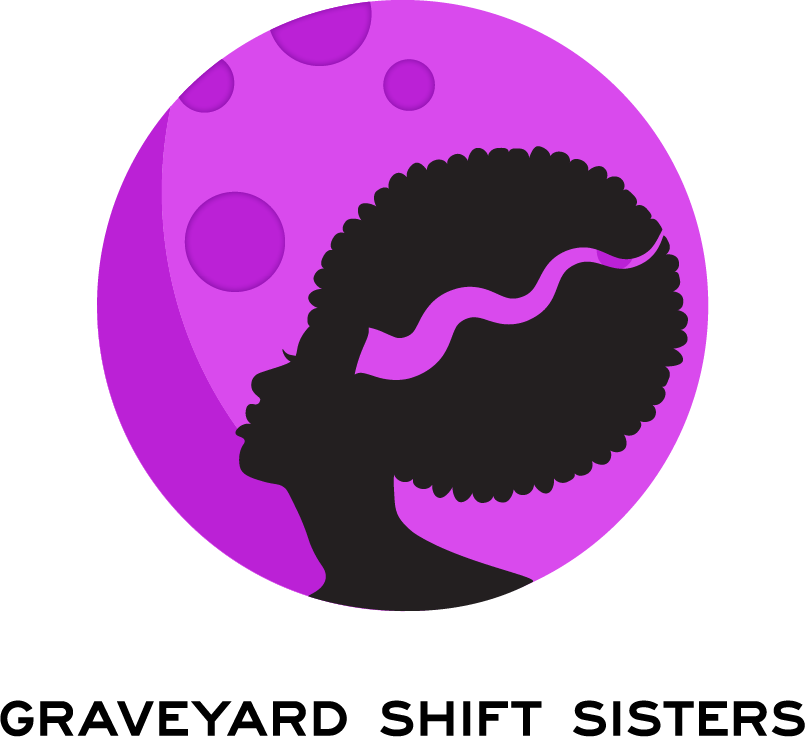How MIDSOMMAR Utilizes and Subverts Horror Movie Tropes of People of Color
For a film that could have been easily white-washed, Ari Aster’s Midsommar does have an inclusive cast. Before our characters are even taken to Sweden where most of the film's dread fueled action takes place, we meet them in their college town. Dani (Florence Pugh) stresses about her sister’s scary email while her boyfriend, Christian (Jack Reynor) drinks at a bar with his buddies, only one of whom is black named Josh (The Good Place's William Jackson Harper).
I have watched enough horror movies to know—and I’ve been brown enough long enough to know—that this setting does not bode well for a person of color. The token minority, say it with me, tends to die first. Because of this ratio, I expected a few other established tropes of the horror genre in Josh’s character, too, and I have to admit, I was delighted and surprised that nothing played out the way I expected.
Given the context, the stereotype I anticipated first was that of the Magical Negro, the one whose main narrative purpose is to further the quest of the white, male protagonist. I thought this because although Dani is our ultimate protagonist, Christian, seems to think it’s his story. Christian’s other (white) friends defend his frustration with Dani, but Josh does not. He says, more than asks, whether Christian is just fixating on his relationship with Dani because then he won’t have to deal with things he should be doing, like writing his dissertation. I loved that this single line established Josh as the real, solid anthropologist. Josh is the character who has done all the research, who networked into the friendship with Pelle to observe the Midsommar ritual (I’m oversimplifying, but no one else masterminded this trip). Josh’s dissertation is about traditional European midsummer rituals and celebrations, and he is the reason why his friends agree to go. This quest is Josh’s quest. Everyone else is riding his coattails.
Josh establishing himself as the authority—after Pelle, who is from this region—also rules him out for the second stereotypical trope that I expect of horror movie characters of color, the Spook. You know, the person who overreacts to the horror in such a cartoony way that no one takes them seriously. (This is me, 100%. I am skittish AF. It might be a stereotype, but I sight the exits in every room I enter, and there must always be two routes of egress.)
The Spook is usually laughed at. I never laughed at Josh. I was more so concerned that he might be OVERconfident in his safety. I was concerned for him. He seems so capable and informed, yet despite its brightness, the setting is so ominous. I was concerned for him despite his making deadpan comments like, “Are we just going to ignore the bear?” Because they DO ignore the bear! The explanation given is, “That’s a bear.” Josh just takes this understatement in stride, too intrigued by the other curiosities to dwell on just one for too long.
But more about the Spook trope: I’m a firm believer that being easily frightened is an evolutionary trait that keeps humans alive. It activates "flight" for people for whom "fight" is never really an option. Only people who don’t have to think like prey don’t react to their fear, I think, and honestly, for people of color, the world is a scary place. "Fight" often ends in a worse situation than the original stimulus. To paraphrase Jordan Peele in the Horror Noire documentary, I often think when watching horror movies, a woman of color wouldn’t react like that. I would never get myself into a situation like that. First of all, if I did, I wouldn’t react by going into shock. How luxurious, to be able to stare into the middle distance after you watched some elderly people who were brainwashed jump off a cliff. So when Connie (Ellora Torchia) and Simon (Archie Madekwe), the other characters of color react in utter horror, screaming in protest at the ritual suicide called the Ättestupa, I was relieved.
Me walking into a field with a hundred traditionally-dressed white people? Nope. Nope. Nope. Catch me at the bar after y’all are done with all that “pageantry.” I will confess, though, that seeing Connie and Simon, two other visitors/potential sacrifices, put me somewhat at ease. Connie and Simon are English, but they are not of one specific, identifiable ethnicity (this is where I identify, and one of the reasons why I was relieved to see Connie). Among the blondness and fair skin, however, they stand out as non-white. When I saw them, I breathed a little more easily. This was a genius and horrible red herring.
Connie and Simon react the way I would to the Ättestupa. While everyone else either stares placidly or covers their face like they watched something surprising onscreen, Connie and Simon both yell, run among the evenly-spaced crowd, and try to get someone’s attention before the man, too, jumps off the cliff. And when they bring out the mallet, their screams get more intense. I so appreciated that moment. Not only does it juxtapose them against the family—no, let me just say it, CULT—but it also juxtaposes them against Josh, the anthropologist.
I don’t want to say he’s evil, but not intervening in a ritual that you know to be fundamentally immoral makes you complicit. Josh is complicit. He knows exactly what the Ättestupa entails, knows what’s going to happen the night before, and not only doesn’t intervene, but he doesn’t even prepare his friends for the traumatic event they’re about to experience—not even Dani, who has just been through a similar trauma with her own family.
Moreover, after the Ättestupa ritual, Connie and Simon try to get the fuck out. That’s the move. They are, of course, thwarted by the efforts of the cult, made to believe by their survivors that they went home when in fact they were sacrificed as a part of the Horga’s ritual. One thing I loved, by the way, is that Connie does not believe the man who tries to pit her against Simon, and she ventures out on her own to try to escape because she knows he’d have to be dead to leave her behind. This puts her at risk, and she does not escape, but she tries. This might not be a super-deep interpretation or analysis, but I liked that reaction for one reason: it’s what I would have done. I. love. it. When horror movies anticipate what their viewers would do, have the most accessible character do that thing, and then have them meet a dramatic end anyway. It validates the whole story!
In all honesty, the persons of color are among the first to die, but they are by no means immaterial. They put into motion the whole drama of the story. Connie and Simon are good people, and they react realistically to horrific shit. When the only people ballsy enough to protest a totally inhumane ritual die, it matters. And, narratively, they have to die, or there would be no story—which, by the way, I believe is the main reason that characters of color typically die in the beginning of the movie.
I don’t want to forget, the reason Josh is murdered when he is: he’s trying to acquire more knowledge. It’s another red herring: we’re made to believe that he knows too much, and that’s why the cult must eliminate him. He was going to snitch. He looked at it as sharing his research, but THEY looked at it as snitching, more or less. But really, everyone who was brought as a guest would have been sacrificed at one time or another. He just made himself vulnerable in his quest for knowledge. I read, too, that the rune carved into his foot which sprouted from under the flowerbed where they buried his corpse loosely translated into “knowledge.”
These are all the ways I could think of that Midsommar plays on its viewers expectations without fulfilling them. On a little more discreet level, though, some archetypes are here, and they work. For example, the fight that Josh and Christian have, in which Christian essentially wants to do the same research project that Josh has identified, except that Christian wants to do a watered-down version of it. Josh says no. It’s his idea. Fuck off. But Christian wants to do it anyway. He asks Pelle for permission to write it, and Pelle says sure (nevermind that Pelle knows what will happen to both of them ultimately). Is it a coincidence that a white man is allowed to steal a black man’s ideas? And that he’s enabled by another white guy’s permission? I don’t think so. When I realized that’s what was happening, I wasn’t mad at the movie; I was mad at the commonness of that situation. I thought the movie was telling the story right. Identity politics weren’t the main narrative of this movie, but they are seldom the main narrative of any movie. It’s a problem, and Midsommar reflects it.
Maybe I’m in the minority in thinking so, but the scariest part of the trailer is its undeterred brightness. It makes the viewer feel like squinting, and Midsommar is a real holiday named for the longest day of the year on which, in Sweden, the sun barely sets. That alone is unsettling. A neverending day, complemented by jet lag, plus a psychedelic mushroom tea just seems like a recipe for a waking nightmare. I’ve never seen a horror film with so much sun. The unyielding yellow-white of the setting is offset by many blooming and shapeshifting flowers, and, of course, its minority characters.
Notice how the aesthetic choice of casting persons of color as the first victims plays onscreen: among all the bright whites and vibrant hues, dark skin stands out. The costumers even put the visitors in darker, if muted, clothing, than the traditionalists. In the birds-eye scenes of the runic-shaped tables, the darker-skinned guests are always the focal points, as they are the focal points for everyone in the cult. The dark characters and the characters in dark clothing end up being sacrificed—and don’t think I didn’t notice that neither man of color was “approved to mate” with the nubile native Maja (Isabelle Grill). I put it in quotations because it was more of a drug-enduced rape insemination, and nothing to envy. It wasn’t on-the-nose eugenics, but that “approval” to me, was not surprising.
I think that Midsommar acknowledges racial tropes of horror movies, and it somehow both utilizes them responsibly and realistically, and it subverts them just enough to keep us guessing. That’s good storytelling.
Mary Kay McBrayer is the author of the book America’s First Female Serial Killer: Jane Toppan and the Making of a Monster. You can find her shorter nonfiction writing on Narratively and her reviews at Fangoria. She co-hosts Everything Trying to Kill You, a comedy podcast that analyzes favorite horror movies from the perspectives of women of color. McBrayer also enjoys building creepy dollhouse miniatures, performing Middle Eastern dance, and watching detective shows. You can follow her on Instagram @marykaymcbrayer and Twitter @mkmcbrayer.

